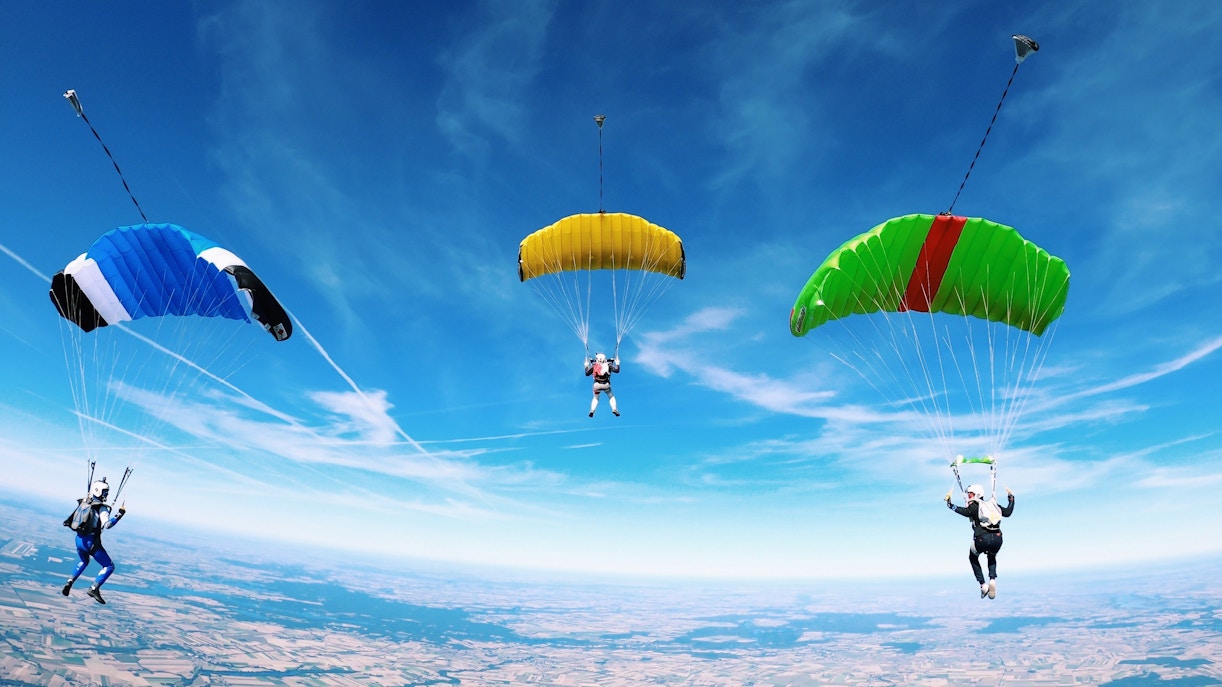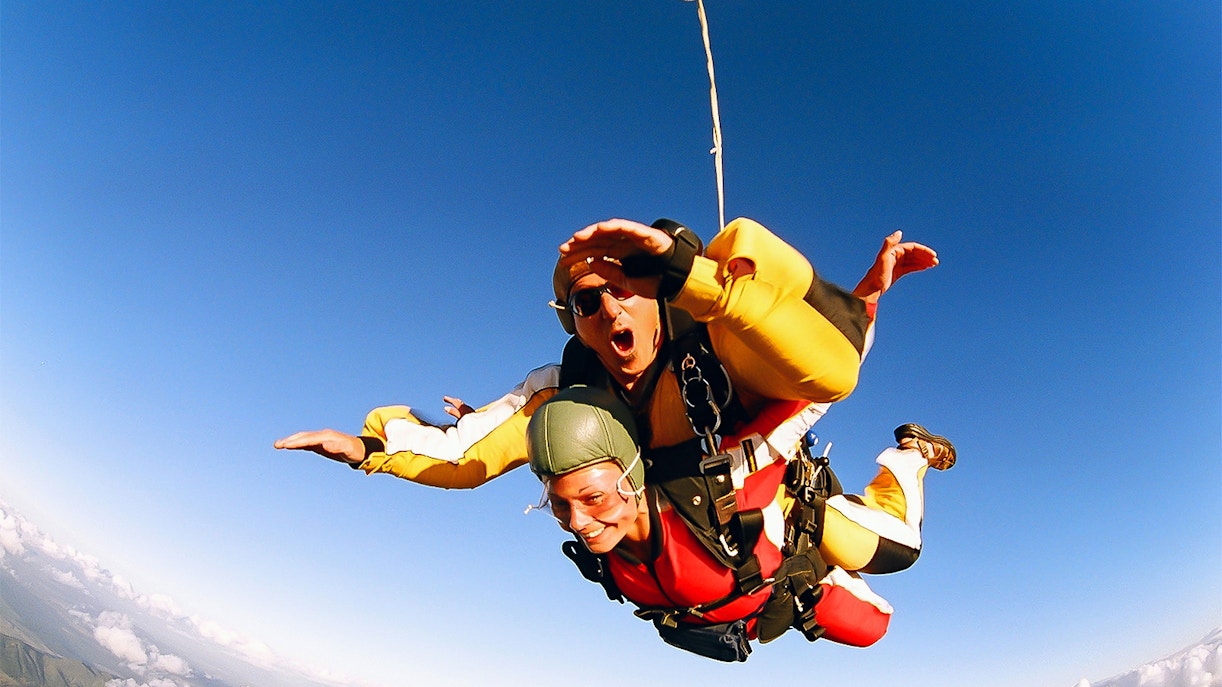The Ultimate Guide for First-time Skydivers
First-time Skydiving
Skydiving, while a fun sport for the free-spirited, is not a cakewalk. You'll have to overcome extreme nerves and brace yourself for a jump that’s about 10,000 ft high in the air. Don’t fret! If you’re a first-time skydiver and don't know what to expect, we’re here to help. Our guide will help you go in fully prepared so that you have a truly memorable experience.
Here are some useful pointers to make your first skydiving experience smooth sailing:
- Prepare yourself mentally: There isn't much physical effort involved in skydiving. You have to get on a place, ride on it to a considerable height and then of course, jump (either with an instructor or on your own). Gravity does the rest of the work. More than your physical self, skydiving tests your mental strength. Taking that first step off the plane requires immense conviction and you can achieve that by not overthinking and simply living in the moment. Before you jump, think about the wonderful view below and the experience of free-falling over it.
- Low fatality rate: The United States Parachute Association has released startling numbers that highlight just how safe skydiving has become over time. With a fatality rate of less than 0.10, you don't have to worry about having a bad skydiving experience since deaths in skydiving are extremely rare.
- What to wear: If it's your first time skydiving, you need to be aware of what to wear. We would recommend opting for close-fitting athletic clothing with lace-up sneakers. Wearing close-fitting clothes is important because you'll also be wearing a skydiving jumpsuit on top and the thinner your clothes are, the more comfortable you'll be. It is essential your clothes and shoes do not get caught in the parachute.
- What to eat: When it comes to food intake before skydiving, moderation is key. Eat a light, nutritious meal before arriving at the dropzone so that you have enough energy to participate in and enjoy your first skydiving experience. Also, stay hydrated throughout the activity because that will help calm your nerves as well. Strictly avoid alcohol or any narcotics up to 24 hours before your skydiving experience.
- Learn more: Talking to experienced skydivers is very crucial for first-time skydivers. There's a lot of knowledge to be shared and there's no better source for it than someone who skydives regularly. From tips on the best position to encouragement and motivation for the jump, a professional skydiver will help you in every way possible.
- Length of a skydive: On average, a skydiving experience lasts for five to six minutes. Of this, approximately 40-50 seconds are spent freefalling while the remaining four to five minutes involve the parachute ride down. Mentally prepare to spend this much time on the air and don't try to rush the process.
Skydive Terms
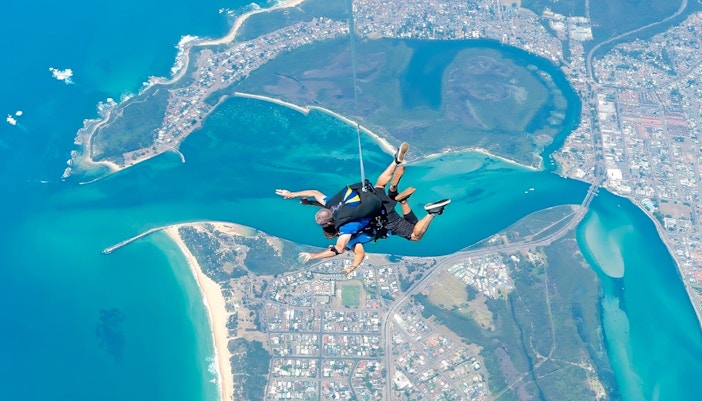
Arch
The most common skydiving position, the arch allows skydivers to fall in a stable manner in a belly-to-earth position.

Reserve Handle:
Located on the left of your handles, the Reserve Handle is the handle you pull to deploy your reserve parachute.
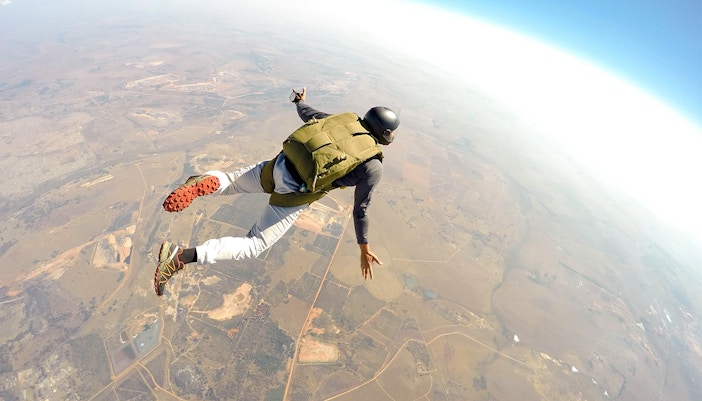
Container
The container is the parachute harness that you wear that holds the main parachute, the reserve parachute, and the AAD.

GCO
The Ground Control Officer is in charge of all ground operations and functions as is the hub of the whole skydiving operation.
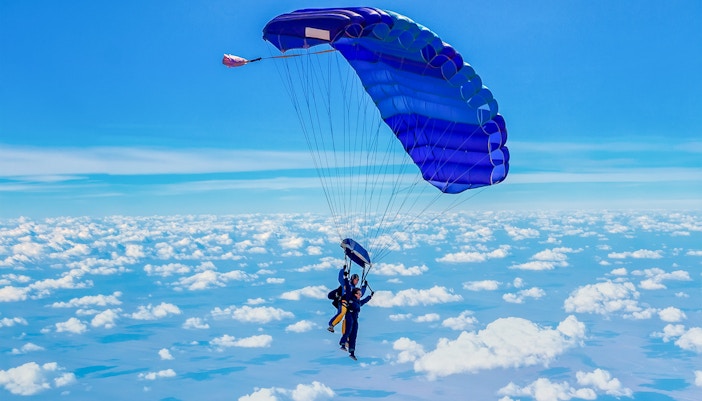
Canopy
In the world of skydiving, a parachute is referred to as canopy. A canopy is made of nine individual cells that inflate to form a wing that helps skydivers glide down easily.

Terminal Velocity
This the speed at which a skydiver falls when the friction of the air on their body is equal to and counteracts the force of gravity and stops acceleration.
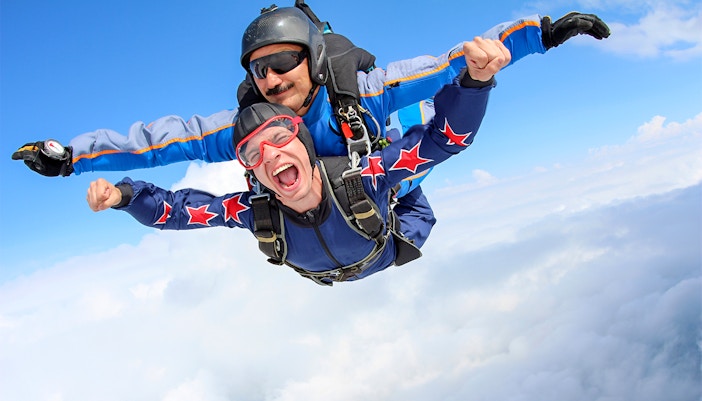
Dytter
An audible altimeter made by Larsen & Brusgaard, the Dytter is designed to 'beep' at predetermined altitudes set by the skydiver and remind them of their current altitude.
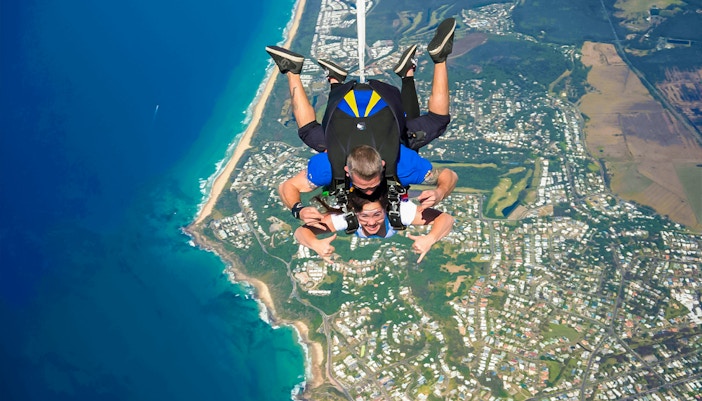
Toggles
Toggles or brakes are the handles attached to the steering lines of the parachute. These are used to steer your parachute and 'flare' your parachute. You can access your toggles from the rear of your rear risers.

AAD
The AAD or automatic activation device functions like an emergency backup computer. It reads barometric pressure and speed and automatically deploys a reserve parachute when a skydiver crosses a predetermined altitude threshold at a higher than normal speed.

AFF
AFF stands for Accelerated Free Fall, the most modern form of skydive training. Here, you can go from someone with no skydiving experience to jumping on your own. By the end of the course, you'll also be competent enough to handle emergency procedures, fall in the accurate body position and safely land a parachute.
Skydiving Rules and Regulations
1. Suit-up: While the skydiving jumpsuit may not look stylish, it’s there to protect you from cold air and wind. Make sure the jumpsuit fits well -- it shouldn’t be too big or too small -- and look out for any openings from where air can get through.
2. Pick the right harness: For your first skydiving experience, the operator will provide you with a harness. But if you're skydiving on your own, you should have a harness that’s been custom-fitted to your body.
3. AAD: To make the experience even safer, your equipment is designed with an automatic activation device. In case you panic and forget to pull the parachute cord, the device will automatically open the parachute for you after you cross a certain height.
4. Wear a helmet: While you might be questioning the need to wear a helmet before skydiving, it's essential if your landing doesn't go as smoothly as you would expect. To avoid injuring your head, wear the helmet and stay safe.
5. Ask questions: Your safety during your skydiving experience is majorly dependent on your instructor. Avoid blindly trusting your instructor without seeing their license first. A skydiving instructor is supposed to have met a set of qualifications to take or train other divers. Generally, a professional instructor will have his license in a place where it's clearly visible. If it's not, don't shy away from asking.
6. Eat healthy: Remember to eat something before you jump. If you jump on an empty stomach, there's a high possibility that you’ll get lightheaded and pass out. Avoid greasy food before your skydiving experience because that'll make you lazy and lethargic. Instead, eat something light and healthy to keep you feeling fresh and fine.
7. Keep calm: It's only natural to look out the plane before jumping. Most people panic at this point, once the magnitude of what they are about to do hits them. To avoid panicking, close your eyes and take a couple of deep breaths in frequent intervals to help calm your nerves.
8. Listen closely: Once the airplane door opens, you won't be able to verbally communicate with your instructor because of the strong winds. Ensure that you and the instructor have an understanding of what the other person is trying to say by employing basic sign language.
Skydiving Tips
- It’s completely safe to jump with your skydiving instructor. They are certified and have, in all probability, completed more than a 1000 jumps before getting their license.
- Consider paying a little more for their video and photo packages. You would definitely want to have your jump on record!
- When choosing a skydive location, remember that the view is an essential part of your experience. Pick a location that offers spectacular views from the sky.
- Remember to pay complete, undivided attention to your training instructions. Even though your tandem instructor does most of the work, you will be required to engage in certain movements and adapt particular body positions to ensure that the free-fall is right.
- Wear loose, comfortable clothing. Ideally, sneakers, track pants or shorts and a regular wear t-shirt is your bet. Avoid wearing clothing that can get caught in the parachute or hinder either your or the instructors vision. Remove all jewelry and other accessories before the jump.
- A tip passed around by skydiving instructors is to shape your body like a banana when you skydive. This involves tilting your head back, looking straight towards the horizon, arching your back, extending your hands to the sides, and the soles of your feet aiming towards the sky. This is considered the most optimal position when skydiving and you should get the posture right when jumping.
- It’s natural to feel like your anxiety will get the better of you before a jump. While there are no real methods to deal with this, the best option is to take long, deep breaths in regular intervals every 8-10 seconds.
- Try and get to your drop zone at least an hour in advance to prepare for the jump. Also, keep in mind that you might have to wait about 3-4 hours before the jump. This could be due to already-engaged instructors, weather conditions, training sessions etc.
- Drink plenty of water; it is important to stay hydrated so that you are fully alert before, during and after your drive.
- Anybody above the age of 18 can skydive. The only exceptions to this rule are pregnant women and those with heart conditions.
- If you’re travelling to a new city and play to skydive there, try and schedule your jump at the beginning of your visit. In case the jump gets postponed, you won’t lose your money.
- Try and prepare for the minimal proximity between you and your tandem skydive instructor. On the plane, you will have to be seated on them and will essentially be strapped to their front during the jump.
- Contrary to popular belief, your free-fall experience does not entail plummeting towards Earth. While coming down, the air will feel gentle against your body and you will slowly float.
- Most free-falls don’t last longer than a minute. Once the general shock has worn off, make sure to enjoy the most of your view!
- In all probability, you won’t remember most of your first jump. Since the experience is exhilarating, everything will seem like it’s moving at an incredibly fast pace which is difficult to take in. Only around your third or fourth jump will you be able to completely gauge the feeling and your surroundings.
- Ensure that you don’t consume alcohol or narcotics 24 hours before your jump. Most skydive centres have a zero-tolerance policy for those who consume any intoxicant before their dive.
- Try and do some basic warm-up exercises before the jump. Since you’ll free-fall at more than 120 km/ph, your body is unaccustomed to such pressure. Basic leg, neck and back exercises should help loosen your muscles.
- Of course, go back and skydive again! Skydiving is an experience that you can enjoy the more times you try it.

